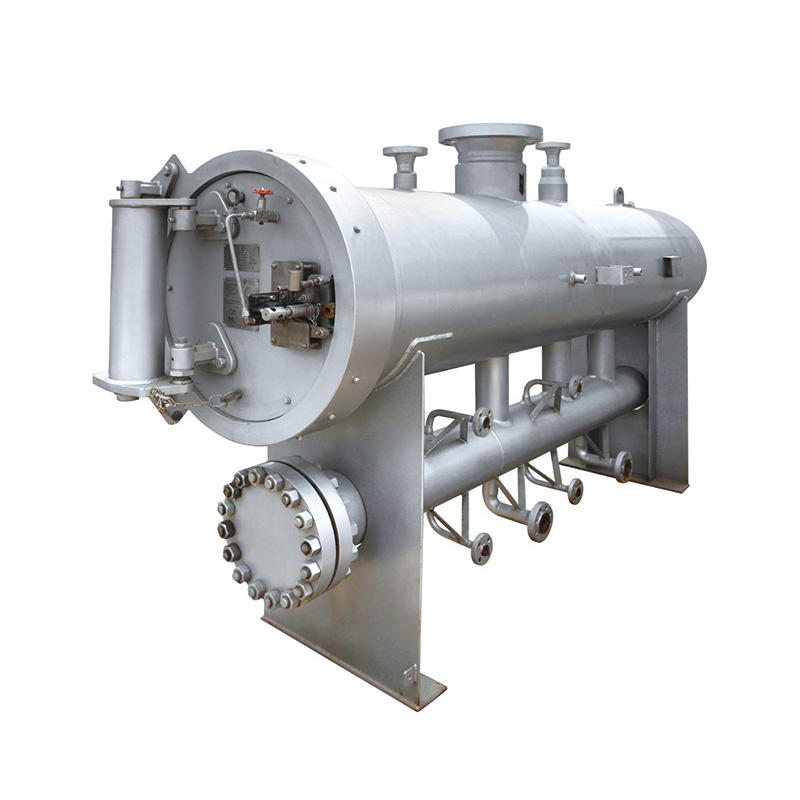
Dec . 04, 2024 16:34
Back to list
gas heat exchanger
Understanding Gas Heat Exchangers Principles and Applications
Gas heat exchangers are essential devices used in various industrial applications to transfer heat between two or more fluids without them coming into direct contact. These exchangers play a critical role in enhancing energy efficiency, temperature control, and overall system performance in many sectors, including power generation, chemical processing, HVAC (heating, ventilation, and air conditioning), and even automotive industries.
Working Principle of Gas Heat Exchangers
At its core, the operation of a gas heat exchanger relies on the principle of thermal conduction and convection. The two main fluids involved are typically hot and cold gases, which flow through the heat exchanger. The hot gas transfers its thermal energy to the cooler gas through a separating wall, usually made of metal, which allows heat conduction while preventing the two gases from mixing.
The efficiency of heat transfer in gas heat exchangers depends on several factors, including the temperature difference between the fluids, the surface area of the heat exchanger, and the flow arrangement—counterflow, parallel flow, or crossflow. In counterflow arrangements, for instance, the two fluids move in opposite directions, which maximizes the temperature gradient and enhances the overall heat transfer efficiency.
Types of Gas Heat Exchangers
There are several types of gas heat exchangers, each serving specific purposes and exhibiting unique designs.
1. Shell and Tube Heat Exchangers This type consists of a series of tubes; one set carries the hot gas while the other carries the cold gas. The heat transfers through the tube walls. This design is popular for its robustness and ability to handle high-pressure conditions.
2. Plate Heat Exchangers Made up of multiple thin plates stacked together, this design provides a large surface area for heat transfer while minimizing the volume of the exchanger. It is highly efficient but is generally used for lower-pressure applications.
3. Air-to-Air Heat Exchangers Commonly found in HVAC systems, these devices allow heat exchange between two air streams. They are essential for recovering and reusing energy in ventilation systems, improving energy efficiency in buildings.
gas heat exchanger

4. Regenerative Heat Exchangers These have the capability to store thermal energy for a certain period before transferring it to the other fluid, allowing for enhanced efficiency, particularly in cyclic processes.
Applications of Gas Heat Exchangers
Gas heat exchangers are pivotal in several industries.
- Power Generation In power plants, gas heat exchangers recover waste heat from exhaust gases and use it to preheat feedwater or air, significantly improving overall plant efficiency.
- Chemical Processing In the chemical industry, these exchangers facilitate the heating or cooling of reactants, ensuring optimal reaction conditions and energy savings.
- HVAC Systems They are employed to recuperate heat from exhaust air, reducing the energy required for heating or cooling indoor spaces, thus lowering operational costs and environmental impact.
- Automotive Gas heat exchangers are integrated into vehicle engines, where they help manage heat dissipation and improve fuel efficiency.
Conclusion
Gas heat exchangers are indispensable components across multiple sectors, focusing on energy efficiency and effective temperature management. By harnessing the principles of heat transfer, these devices not only enhance performance but also contribute significantly to energy conservation efforts. As industries continue to seek ways to cut down on energy consumption and greenhouse gas emissions, the role of gas heat exchangers will only grow more prominent in developing sustainable solutions for a greener future.
Next:
Latest news
-
Safety Valve Spring-Loaded Design Overpressure ProtectionNewsJul.25,2025
-
Precision Voltage Regulator AC5 Accuracy Grade PerformanceNewsJul.25,2025
-
Natural Gas Pressure Regulating Skid Industrial Pipeline ApplicationsNewsJul.25,2025
-
Natural Gas Filter Stainless Steel Mesh Element DesignNewsJul.25,2025
-
Gas Pressure Regulator Valve Direct-Acting Spring-Loaded DesignNewsJul.25,2025
-
Decompression Equipment Multi-Stage Heat Exchange System DesignNewsJul.25,2025

